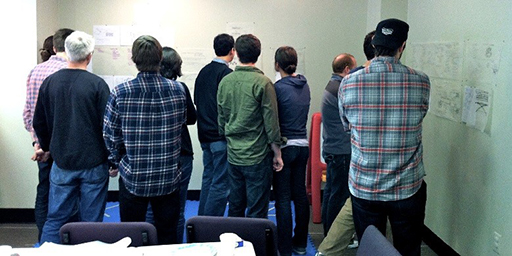4.1 Tools for reaching a consensus
If you have decided that your group or team is going to operate by consensus, then you need to consider the process to reach that consensus. You have already recognised that reaching consensus can take time and it is frustrating for team members if this is not managed well. Having an understanding of the tools you can use to make this an effective process can make a real difference.
- Identify the decision which needs to be made. It is important that you all agree on the goal you are focusing on so time is not wasted on discussing things not relevant to the task in hand.
- Establish facts. What data do you already have and what resources can you draw on? Different opinions can be discussed for hours on end without getting anywhere, you need to check the facts and agree what facts you need to have in place before you start to explore this further.
- Agree on the criteria for a successful decision. Make sure that you have considered what would make a decision successful. What would success look like here? What issues need to be dealt with in the solution and what criteria will help you decide whether everyone is happy about the decision reached?
- Brainstorm alternative solutions. What this means is generate as many ideas as possible. The ideas you come up with should not be evaluated or criticised at this time as this will stop the creativity of the process and could prevent a really innovative solution being voiced.
- Evaluate the options that have come up and choose the best one. Remember to use the criteria you came up with earlier in the process. Consider the pros and cons of each option and which option is the most realistic for you to implement now.
Activity 6 Botched brainstorming and how to avoid it
Think of a time when you have been involved in a group session where you have brainstormed for ideas. Did this process run smoothly and work successfully? Take a moment to consider your experience of brainstorming and try to come up with at least three things that can ruin a good brainstorming session (Figure 5).
Discussion
Even if you have not used the brainstorming technique recently or even experienced it at all, you can probably think of things that could happen within a group to prevent this being an enjoyable or productive exercise. Some of the common problems that can get in the way of this being a creative process include:
- early criticism of ideas which can prevent other members of the group offering their own ideas for fear of looking foolish
- no actions for follow up, evaluation or recording of decisions reached
- no clear topics or objective
- questions of feasibility coming in too early and stopping the creative ideas flowing
- some group members dominating the discussion with other people not speaking or sharing their thoughts at all
- no time limit set for the task.
Did you come up with any of these or did you think of other pitfalls that a group could fall into. Well done if you came up with more than three ideas!
There are a number of different techniques you can use to improve the quality of your brainstorming sessions but you will now look at two of the more common ones – the stepladder technique and the charrette technique. After reading these, you may realise that you have actually experienced one of these without being aware of its name or you may have other examples of techniques which you would like to make a note of in your workbook for this week.

